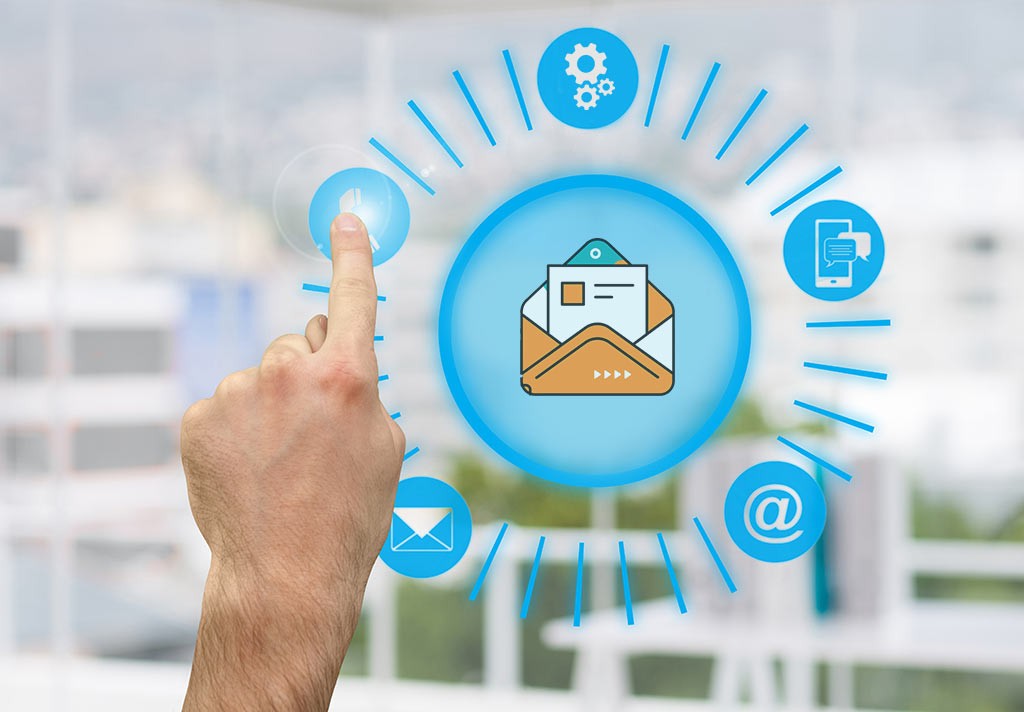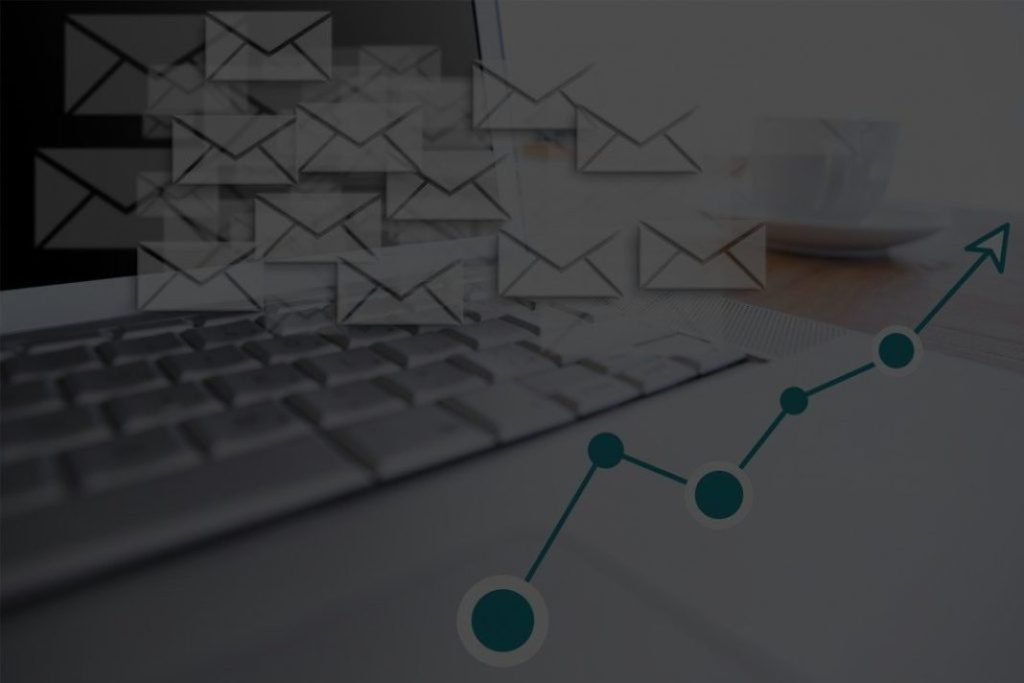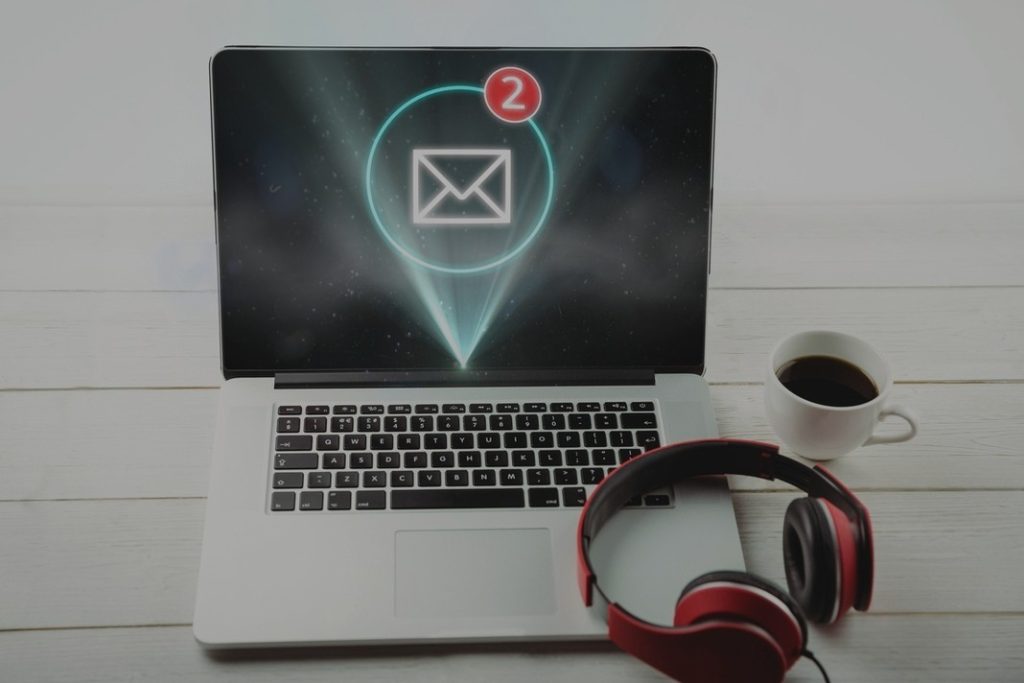Incorporate Personalization in the Email Marketing Campaigns
This article explores how to use personalization in email marketing campaigns to create a powerful connection with your audience.

Prelude
Emails are invisible tools in the marketing arsenal of B2B companies.
According to research by Statista in 2019, the total number of global email users was 3.7 billion in 2017 which is projected to reach 4.3 billion users by the year 2022.
With approximately half of the total population of the world using Email marketing, it certainly is a tool that B2B companies have always relied on for a consolidated return on their marketing investments (ROMIs).
According to a report by imaginepub.com, emails are the third most influential source of information for B2B customers, only behind colleague recommendation & reviews from the industry-specific experts. Another report by content.myemma.com implies that 59% of the B2B marketers consider emails to be the most effective channel for lead generation.
Email marketing encompasses the marketing tactics wherein commercialized messages are sent to a group of audiences using their email addresses. Emails are broadcasted from diverse motives such as advertising about specific products or services, to request businesses, to build brand loyalty, trust, reputation or brand awareness.
According to a report by Salesforce, 73% of senior-level marketers believe that email marketing is the core of their businesses as emails are critical points of communication along the customers’ journeys.
Marketing emails are often sent across a purchased list of customers or to the existing databases of customers. Email marketing has various advantages such as improved business relationships with existing and potential customers, improved loyalty of customers which helps in customer retention & repeat businesses, acquisition of new customers or convincing the customers to purchase something immediately. Besides, Email Marketing is also beneficial for sharing third-party ads.
Research by Emarsys in 2018 concluded that 81% of the small & medium-sized businesses rely on emails as the primary channel for customer acquisition while 80% of them trust Emails for customer retention.
Email Marketing time & again has proved its effectiveness as an impactful channel for B2B lead generation & increasing the sales revenue.
According to a report by Campaign Monitor, Email Marketing generates 4400% ROI & $44 for every $1 spent.
Personalized Emails are being used by B2B companies nowadays. Personalization lies to the very core of Inbound Marketing. People, while in various stages of their buying cycles, like to be treated as people & love to buy from people rather than brands. They expect highly tailored messages being delivered to their inboxes through the email marketing campaigns. The messages either need to resonate with some of their pain points or should be some specific messages in alignment with their areas of interest.
According to a report by Yes Lifecycle Marketing, Emails with personalized subject lines have 50% higher open rates.
Personalized emails are characterized by the following features:
- They stand-out within the inboxes of prospects & the audiences as a highly relevant tailor-made piece of information.
- Personalized emails are more likely to be clicked-on & opened up.
- Personalized emails improve customers’ experiences as right pieces of information are sent across to the right set of people at the right time which ultimately helps in increasing the sales revenues & expediting the journey of the individual prospects through their buying cycles.
Steps to Personalize Email Campaigns
With the advent of several automated & semi-automated tools for Email marketing, personalizing email campaigns isn’t as difficult as it seems.
According to a report by Social Media Today, “82% of marketers reported an increase in open rates through email personalization, while 75% consider it to improve the Click-Through Rates (CTRs).
The strategies for architecting & sending personalizing Emails vary from simple to some of the most advanced ones.
The following are some of the ways to improve personalization in the Email Marketing Campaigns:
1. Figuring Out the Ideal Personas:
Marketers can start by knowing their customers. They can scrutinize their databases to derive the types of firm their personas work for, their industry types, location, and the size of their businesses, their roles, job titles, age & gender. They can also inspect if there are any obvious groupings.
The insights can be used to define the ideal personas for brands. Personas are the semi-fictional representations of your most relevant customers. Personas can be based on diverse factors such as demographics, job industries & income levels, their areas of interests, personalities, behaviors & motivations.
2. Use Proper Personalization Tags:
Using proper personalization tags such as adding a proper subject-line & “from” name improves personalization dramatically. Adding subscriber’s first name in the subject line of the email as well as in the salutation line are also beneficial strategies that compel subscribers to open the emails.
According to a report by Experian, emails with personalize subject-lines have 26% more likelihood of being opened.
The subject-lines for the emails should be always split-tested. The right ones will always positively impact the endeavors of marketing.
According to Convince & Convert, 69% of the email recipients report an email as spam exclusively based on the subject line.
The subject-lines often have darker, heavier text which makes them stand out from the rest of the details in the email.
3. Focus on Segmenting & Hyper-Segmenting the Personas based on their diverse areas of interests & other details:
In the pursuit of modern B2B marketing, segmentation of the prospects is an essential pre-requisite to delivering them the hyper-personalized experiences. The prospects can be segmented into diverse segments based on their demographic, firmographic, psychographic, technographic, ‘fit-data’ as well as data from their diverse research methodologies & their past buying behaviors.
Based on the intent-data gathered from the first & third-party resources, the prospects can be further segmented into different segments. With the evolution of the algorithms based on machine learning & artificial intelligence, the prospects can also be further divided into diverse clusters based on Artificial Intelligence (AI) & Machine Learning algorithms such as k-means clustering.
The B2B marketing these days also thrives on niche-specific targeting, which means defining & targeting personas following specific niches.
According to research by Campaign Monitor, marketers have witnessed a 760% increase in revenue from segmented campaigns.
To improve personalization, the segmented list can further be broken down into smaller segments. Customers can also be prioritized based on their genders or based on their engagement levels with the brands.
Many-a-times marketers also allow subscribers to prioritize & select their interests. Audiences can also be asked to fill up the survey forms so that their interests can be captured & accordingly personalization can be improved for them.
Personalization can also be improved by monitoring the sales cycles of the prospects & feeding them with highly-relevant pieces of content, in orchestration with their buying cycles, so that the personalized experiences for them are improved.
Customer Relationship Management (CRM) platforms can be monitored to find out which types of campaigns resonates the best with the interest levels of niche-specific personas. Accordingly, new campaigns can be prepared for audiences. The design of the campaign, the font type, size & color needs to be split-tested often to establish whether the design of the campaign is optimized for specific groups of personas.
4. Employ Audience Mirroring to Increase the Customer Base:
Understanding the prospects not only helps in hyper-personalizing their experiences but also helps in figuring out new segments, similar to the existing audience bases. Figuring out the group of audiences who exhibit the similar research methodologies & omnichannel behaviors as existing client database, enables marketers to add new marketing channels to their list of social media & other web-based platforms to enhance their marketing capabilities to generate more leads.
However, care should be taken that email marketing is consent-based as any violation of the data-integrity of the prospects in terms of the collection; processing & acquiring of data can lead to hefty fines under the General Data Protection Regulation (GDPR) of the European Union (EU).
While setting parameters for the acquisition of data, prospects should make selections based on prospect data that is similar to their existing group of customers & personas. Mirroring the audiences across the multiple channels opted for marketing, enables the marketers to optimize their marketing efforts to attract & convert like-minded prospects from diverse referral channels.
Audience mirroring, when applied in conjunction with email segmentation allows marketers to send the right messages to the right people at the right time. It leads to the generation of stronger campaigns so that the marketers can find new customers as well as can also convert them faster.
5. Optimize Email Frequency for Content Diversity:
One needs to optimize email campaigns around frequency & the diversity of content being supplied to the inboxes of the prospects. For this purpose scrutinizing the Email marketing campaigns is a necessity.
Marketers should evaluate the performance of their email campaigns every six months. The effectiveness of diverse types of emails can be monitored. These include the following:
- Promo emails
- Product introductions
- Newsletters
- Welcome Emails
- Surveys
Each of the different types of content being delivered to the inboxes of the audiences needs to re-evaluated after a while, based on relevance to the niche-specific audiences – whether they are of interest to them or not. A well-planned, orchestrated & diversified set of communications that have been split-tested will help in strengthening the brand equity & will help in accelerating conversion-based communications for expediting the journeys of the prospects through the sales funnels.
Dynamic content allows marketers to control what content specific groups of personas use for each block of content within an email. The same email can be converted to multiple versions which can, in turn, be personalized for different sets of subscribers based on information that the marketers have about them. Dynamic content can be used to increase the relevance of a single campaign.
7. Integrate marketing Automation Tools & CRM:
Integrating the marketing automation tools & CRMs not only allows the marketers to diversify their email campaigns to best match up with the relevance levels of their personas but also allows the integration of the endeavors of the marketing & sales teams to expedite the sales conversions. This happens as the potential customers are fed with dynamic pieces of content based on their stages in the buying cycles at the correct time, to drive conversions.
8. Embrace Automation:
Automation not only allows the marketers to send tailored & hyper-personalized emails to the inboxes of their prospects but also equips them to make data-driven decisions. Automated marketing platforms capture the interests of the buyers from diverse platforms & the data can be used to determine the engagement level of the prospects.
Furthermore, prospects can also be segmented based on their intent-data. Automated platforms serve the best to compile the first & third party intent data. The data after analysis can be used to generate meaningful insights, to fix the existing loopholes in marketing strategies & to optimize the strategies for omnichannel.
Improving the relevancy of email campaigns for prospects helps in optimizing the Return on Investment (ROI).
9. Personalize the Landing Pages:
Personalization doesn’t end with email campaigns. Following the messages in the email campaigns that drive the prospects to the landing pages, the marketers also need to ensure that the prospects land on personalized landing pages. Building personalized landing pages with tailored pieces of content, based on the emails that drive subscribers to this point, is very important.
Optimizing the landing pages ensures that the prospects are tactfully guided further on the paths of their conversions & their conversion pathways are streamlined.
10. Focus on permission-based Marketing for Collection of Data:
To send personalized emails to prospects, marketers need to know their prospects. They need to amass various pieces of information about the personas, before segmenting & targeting them.
Whether a customer signs up for a webinar, downloads a white paper, makes a purchase or interacts with a social ad, all the information has to be provided by the prospects at their own will. As per the General Data Protection Regulation (GDPR), the marketers need to seek the permission of their prospects before they can collect and process their data for marketing.
Non-compliance with GDPR not only results in hefty fines but is also derogatory to the overall reputation of the brands.
Bringing It All Together
Acquiring customers with different motivations, in different geographies & with diverse interests isn’t an easy task. However, over a while the marketers have discovered that optimizing users’ experience (UX) lies at the heart of every successful marketing campaign. The marketers need to evaluate how they personalize experiences for segment-specific audiences as there is no one-size-fits-it-all strategy when it comes to personalization.
With the advancement in the technology, personalization has evolved to the level of individualization & prospects nowadays need to be fed with highly relevant pieces of content, which have been tailored to resonate with their interest areas & address their pain points during their specific buying cycles. Inbound marketing is as much about opting for the latest technologies for improved users’ experience (UX) as it is about striking the right emotional chords of the prospects for optimizing conversions.
The content of the email copy & images needs to be optimized. With the entire market green-signaling the video-based pieces of content as an indispensable part of marketing strategies, assimilating videos in their email campaigns also seems to be a great idea for the marketers.
Stephen Hammill, Anvil Media Inc., quotes the imperativeness of personalized emails in marketing as follows:
What truly drives awesome email performance is a more personalized messaging strategy, one that adjusts the timing, cadence, and content of emails to segments built off our users’ captured behavioral data. With this approach, email is part of a conversation that begins at the inbox but doesn’t end there.
As the expectations of the customers continue to increase & technology fuels their research methodologies, the realm of personalization transcends seamlessly into new dynamics with each passing moment.
The Artificial Intelligence & the Machine learning (ML) have revolutionized every sphere of marketing from collection of data to marketing segmentation to the segmentation of the prospects & acquisition of data for insightful introspection on optimizing diverse marketing campaigns across omnichannel.
Therefore, frequently monitoring several marketing campaigns & quantifying their outputs with the help of diverse Business Intelligence (BI) tools is essential. The marketers also need to split-test their marketing campaigns including email marketing to keep abreast with the best trends within their niches & to optimize their campaigns accordingly.
We, at Valasys Media, leverage our wealth of knowledge to help our B2B clients decipher the pathways to optimize sales revenue. We provide special impetus to generate & run hyper-targeted campaigns to help our customers achieve their core bottom-line objectives such as improved customers’ experience (CX) & an optimized Return on Investment (ROI).
Our services include lead generation, lead nurturing, list-building services, account-based marketing, content syndication & contact discovery services to name a few. For the furtherance of perennially healthy sales pipelines & for streamlining the trails to customer success, feel free to get in touch with our team of experts.



